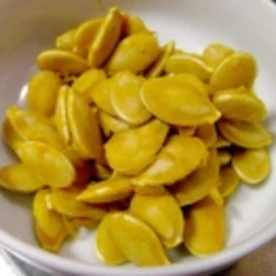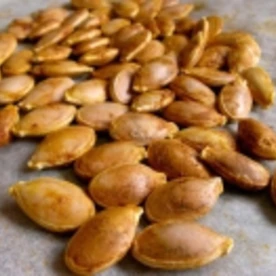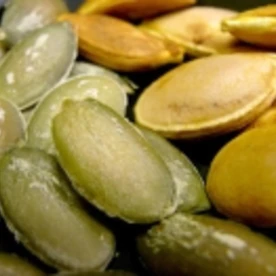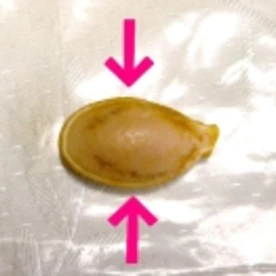Flavors of Fall - Vegetables
- MAIDO
- Sep 30, 2023
- 5 min read
Hello! This is the last article of Flavors of Fall. Even if you don't like vegetables, the fall vegetables are very sweet, so you might actually like them. Read this blog post and come to the store to get them!
***
Kabocha Squash Japanese Pumpkin

Kabocha squashes are also known as Japanese pumpkins. They are getting popular in the U.S. in the recent years. If you have tried our tempura at Maido, you have had them before. The skin is deep green, but the fruit is bright orange. They have a velvety texture and a sweet and buttery flavor not like other squashes. They taste more like sweet potatoes. Kabocha are one of the most nutrient-dense of the green and yellow vegetables, and their main nutrients include vitamins C and E, as well as beta-carotene and potassium. Along with boosting the immune system, they also have antioxidant properties that help prevent aging. Another thing is that they improve and prevent skin problems, such as preventing spots and wrinkles and normalizing turnover. Our diets tend to be over-salted due to processed foods and instant foods, but eating kabocha helps to eliminate excess salt from the body, which leads to improved swelling. Kabocha are also characterized by the presence of both soluble and insoluble fiber, which is effective in regulating the intestinal environment. Did you know that kabocha seeds, outer skin, and wattles are actually rich in nutrients? The outer skin is said to contain more potassium and dietary fiber than the flesh. Although it is very hard in its raw state, it becomes as soft as the flesh when cooked, such as in a stew or stir-fry. The seeds also contain high levels of linoleic acid and alpha-linolenic acid, which are essential fatty acids, as well as vitamins E, B1, and B2. Linoleic acid and α-linolenic acid are components that cannot be produced in the body and are effective in lowering neutral fat and cholesterol, while omega-3 fatty acids and vitamins are expected to prevent high blood pressure and have a beautiful skin effect. The wattles that surround the seeds are also said to be rich in dietary fiber as well as β-carotene.
*
(Recipe) Simmered Kabocha with Seeds

As mentioned above, kabocha can also be eaten with the seeds and wattles. With this recipe, you only discard the head which is too hard to eat texture wise. Cook the seeds and wattles along with the kabocha flesh and enjoy the taste. The seeds can be cracked open and the inner part can be eaten.
Ingredients (2-3 servings):
1/4 kabocha
all the kabocha seeds from 1/4 kabocha
all the kabocha wattles from 1/4 kabocha
a little more than 2 tbsp of sugar
3 tbsp of soy sauce
1 tbsp of mirin sweet cooking rice wine
a little less than 1 tsp of dashi Japanese granulated soup stock
Directions:

1. Separate the kabocha into flesh, seeds and wattles. Cut the kabocha into pieces of desired size. Use only the seeds that are thick and puckered on both sides; discard flat seeds that are not thick, as they have nothing inside.

2. Place the flesh, seeds, and wattles in a pot, skin side down, without overlapping.

3. Pour in enough water to cover the and granulated dashi to cover the kabocha and cook over high heat.
4. When the water comes to a boil, lower the heat and add the sugar. Remove the scum from the water. 5. When the kabocha is cooked, add soy sauce and mirin and simmer for a while.


6. The seeds are edible only inside, so serve them cracked open to be eaten easier. Tips:
Do not pile them skin-side up when boiling to prevent them from falling apart.
This recipe is for stronger flavor. You can reduce the amounts of seasoning to your taste.
*
(Recipe) Kabocha Seeds Snack in Microwave

1. Remove the seeds and the wattles from the kabocha. Use only the seeds that are thick and puckered on both sides. Discard flat seeds that are not thick, as they have nothing inside. Count the number of seeds to figure out how long you cook them in the microwave.
2. The dried wattles will stick to your fingers when shelling, so if you do not want it, rinse the wattles around the seeds with water and remove them.
3. Place a parchment sheet inside the microwave and arrange the seeds. Make sure they do not overlap. The turntable type heats unevenly, so avoid arranging them in the center.
4. Heat in a microwave at 800W for the calculated time of 2.5 seconds per seed. If there are 60 seeds in total, 60 seeds x 2.5 seconds = 150 seconds (2 minutes and 30 seconds). Be careful not to burn yourself!
5. During heating, the microwave window will fog up due to steam from the seeds. When the window is almost fogged up, stop heating, take out a piece of seed and break it open to check the inside.
6. If it is undercooked, crack the shells every 30 seconds to taste and finish cooking to your liking.
7. When you hear a crackling sound inside the microwave, stop heating immediately! Overheating will burn the inside.
8. When cracking the shell, bite lightly with your teeth in the direction of the arrows in the photo and apply pressure to crack it open. Be careful not to bite too hard or you will not be able to remove it well. Sprinkle salt, etc. as desired and enjoy!
***
Satsumaimo Japanese Sweet Potato

Satsumaimo sweet potatoes are another kind of vegetable known as a Flavor of Fall in Japan, and it is also in Maido's tempura. They have the reddish-purple skin and the pale yellow flesh with nutty flavor similar to chestnuts. The texture firmer and the flavor is sweeter. It is often used for desserts in Japan. Like kabocha, satsumaimo also contain potassium, dietary fiber, and vitamin C, so they have similar benefits. They help to reduce swelling, improve the intestinal environment, and prevent the absorption of fat, making satsumaimo an indispensable food for weight loss. In addition, satsumaimo contain yarapin, which softens stools and makes them easier to expel. If you suffer from constipation, we recommend having them to help with stool elimination. They are highly nutritious and are considered a semi-complete meal, making them ideal for lazy eaters who have trouble with cooking. You can just steam, boil, or bake and eat them. When it comes to nutrition, it is recommended to eat them with their skin on. The satsumaimo skin is rich in types of polyphenol called chlorogenic acid and anthocyanins that have antioxidant effects. Anthocyanins improve eyesight as well. It is said that about 80% of these polyphenols are found up to 0.2"/5mm under the skin.
*
(Recipe) Easy Satsumaimo Sticks

Here is a simple sweet potato snack that is chewy on the inside and crispy on the outside. It gets heated in the microwave before frying, which shortens the cooking time!
Ingredients:
7 oz./200 g of satsumaimo sweet potato
1 tbsp of water
3 tbsp of sugar
1 pinch of salt
2 tablespoons oil
Directions:

1. Wash the sweet potatoes well, cut into bite-size lengths, and cut into 0.3"/7 mm sticks. Put the sweet potatoes and water in a heat-proof container, cover with plastic wrap and microwave at 800W for 3 minutes to drain.

2. Heat the oil in a frying pan over low-medium heat, add the sweet potatoes and cook, turning them upside down, until browned.

3. Add sugar and salt and stir-fry until sugar dissolves. Enjoy!
***
There is a lot of food items, housewares, stationery, and gifts available at the store and our online store, Maido! Kairashi Shop, where you can place your order for shipping or store pickup! Happy shopping. :)













Comments